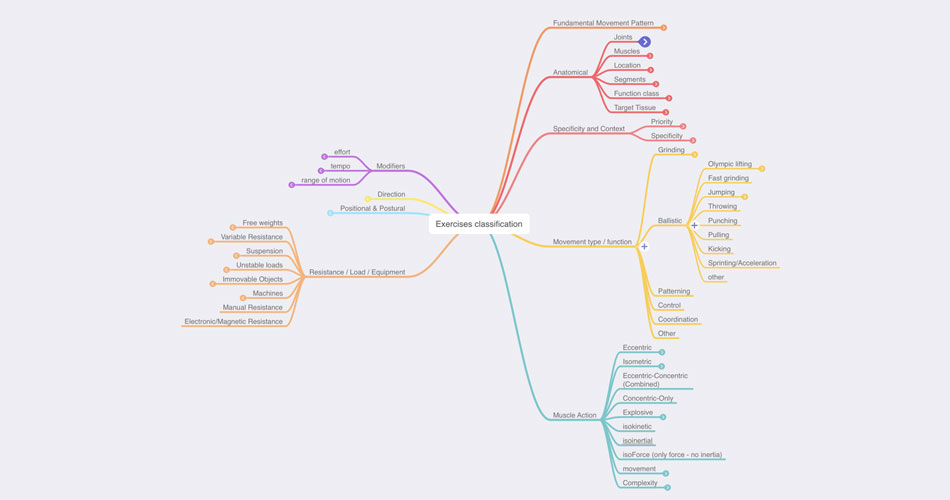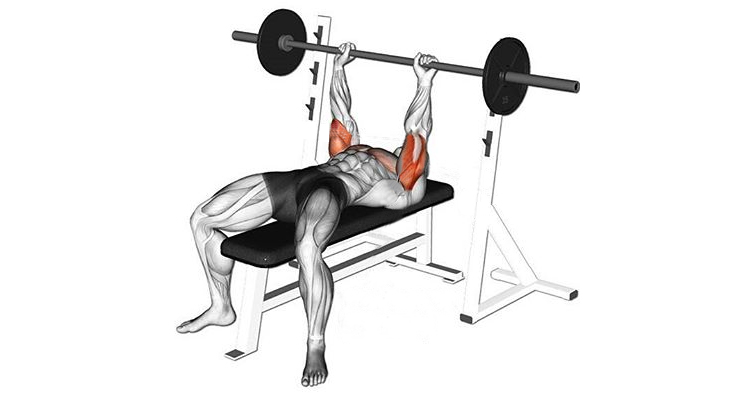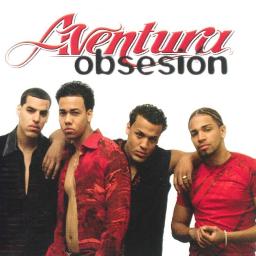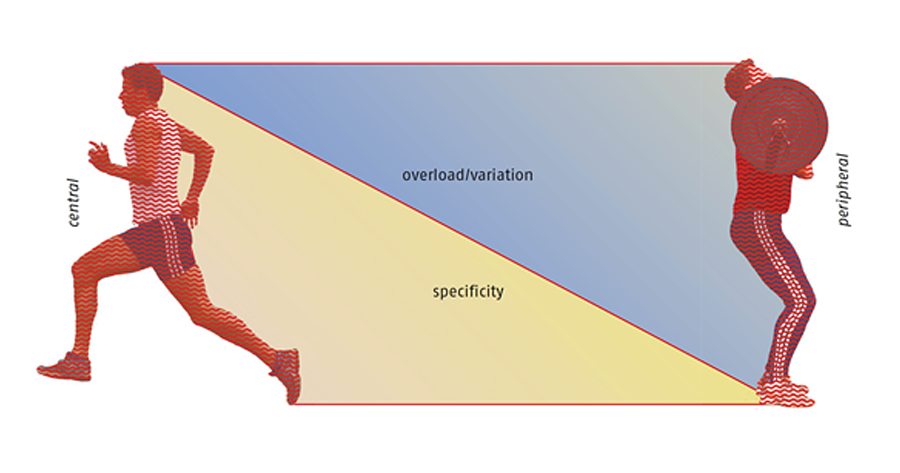Concurrent Strategies in Strength Training – Part2
Previus Part:
Concurrent Strategies in Strength Training – Part1
Priority lifts
I openly admit it. This is my favorite approach to concurrent strength training. I don’t know if anyone called it priority lifts before or if anyone knows what the hell I’m talking about here, but I’ve called it that somehow. Because we are going to differ between different exercise categories and give them priorities, I hope that calling this method priority lifts was a smart idea. If you think it is not, feel free to contact me and curse me.
According to its importance, each exercise can be classified into a separate group. Depending on the author, there could be different classifications of the exercises. For example, Joe Kenn, in his book, The Coach’s Strength Training Playbook, uses the following classification of exercises:
- Foundation exercises
- Supplemental exercises
- Major assistance exercises
- Secondary assistance exercises
One classification of exercises that I will use here is the classification that Christian Thibaudeau presented in his series of articles entitled, “How to Design a Damn Good Program” published at T-Nation.com. If you haven’t read this series of articles (and actually everything this guy has ever wrote), you are missing a lot because there is more practical information in those couple of pages than in 500 plus pages in a strength training textbook. It is an awesome article and one of my favorites.
| Exercise classification by Christian Thibaudeau | |
| Primary exercises | This category includes a small number of multi-joint, multi-muscle, free weight, and preferably multi-plane movements. These movements allow you to use the most weight for each muscle group and place the highest demand on the body and nervous system. |
| Secondary exercises | This is similar to the above except that the exercises in this category place a slightly lower demand on the body and central nervous system. |
| Auxiliary exercises | This very broad category includes the isolation movements and most machine exercises. These exercises allow the use of considerably less weight than exercises in the first two categories and so place far less demand on the nervous system. |
| Remedial exercises | This category contains movements, mostly isolation, whose purpose is to correct problems such as muscle imbalances or very specific weak points. Rotator cuff work, balance, and proprioception drills also fall into this category. |
Basically, Joe Kenn and Chris Thibaudeau use the same classification with some minor differences between groups. Most coaches usually reduce exercise classification to core and assistance exercises, which is more practical and easier to use. Again, everything depends on the goal of training and the context and so does the exercise classification that you use. If exercises are tools, their classifications can be different types and organizations of the toolbox. Be flexible with classifications. They are not set in stone.
According to your sport and goal, different exercises may be considered under a given group. For example, Olympic lifters may use the following classifications:
| Olympic lifter | |
| Primary exercises | Clean and jerk, snatch, squat, deadlift, press, push press |
| Secondary exercises | Hang clean, hang snatch, high pulls, front squat |
| Auxiliary exercises | Romanian deadlifts, lunges, step-ups, bench press, chins, rows, shrugs |
| Remedial exercises | Rotator cuff, adductors/abductors, calves |
This could be an example of exercise classification for a powerlifter:
| Powerlifter | |
| Primary exercises | Squat, bench press, deadlift |
| Secondary exercises | Front squat, box squat, sumo deadlift, good morning; Romanian deadlift, wide/narrow grip bench press, military press, floor press, chains, bands, incline/decline bench press |
| Auxiliary exercises | Pull-through, glute ham raise, lunges, step-ups, rows, chins, Bulgarians, reverse hypers, dumbbell variations and isolational stuff (delts, triceps, biceps, calves) |
| Remedial exercises | Rotator cuff, shoulder stability work, TKE |
For an average athlete looking for strength training, the following classification could be used:
| Athlete | |
| Primary exercises | Clean, squat, deadlift, bench press |
| Secondary exercises | Front squat, Romanian deadlifts, lunges, military press, chins, rows, dumbbell variations |
| Auxilary exercises | Dips, delts, calves, biceps, triceps, grip |
| Remedial exercises | Shoulder, ankle, and knee pre-habilitation, neck |
Please note that different classifications may be used depending on the weak and strong points of the athlete, his level of development, training period, emphasis and other stuff. Those classifications are used to help the coach organize the training system and prioritize things according to the demands of the sport and position. With average athletes, the primary exercise would be those that give the most bang for the buck and have the greatest transfer to the field while other exercises will aim to assist that transfer and provide whole body development and injury prevention.
Because exercise categories can (or should?) have their own planning (different loading, progression, and periodization plans for different exercise categories and their usage/rotation in the training system), concurrent training can be easily achieved. For example, a powerlifter would build explosive strength with DE box squats, chains and bands, bench presses, and speed deadlifts. He would build maximal strength with ME squats, presses, and deadlifts and their special variations (secondary exercises), and he would build muscular hypertrophy with SE and RE single-leg exercises and dumbbell variations of presses, some chins, and rows.
With an average athlete, explosive strength would be developed with Olympic lift variations, plyometrics, and explosive jumps, and maximal strength would be developed with ME/SE squats, benches, and deadlifts. Muscular hypetrophy would be developed with SE/RE single leg stuff, dumbbell variations, isolation stuff, chins, and rows.
In other words, primary exercises may use the ME loading protocol. Secondary exercises may use the SE loading protocol, and auxiliary and remedial exercises may use the RE loading protocol to achieve concurrent training approach.
| Concurrent training with priority lifts | ||
| Exercise group | Training goal | Loading protocol |
| Primary exercises | Explosive strength, maximal strength | DE, ME |
| Secondary exercises | Maximal strength, muscular hypertrophy | ME, SE |
| Auxiliary exercises | Muscular hypertrophy, muscular endurance | SE, RE |
| Remedial exercises | Muscular endurance, anatomic adaptation, pre-habilitation | RE |
However, if someone wants to nitpick (and that would be me), this can be considered concurrent training as a whole (because all loading protocols are present). It may not be considered concurrent training depending on which movement pattern or muscle groups we are talking about. For example, in the athlete’s situation mentioned earlier, the legs would receive explosive strength work, maximal strength work, and muscular hypertrophy work. The situation is similar for the upper body “push” muscles, but the upper body “pull” muscles (used for chins and rows) will receive only muscular hypertrophy work. Ring a bell or not?
To be considered totally concurrent, all movement patterns must receive the same treatment (ME, SE, and RE work; not necessary for DE) in a training program or it would be only partially concurrent. For this reason, most, if not all, concurrent powerlifting, Olympic lifting, and athletic training programs are partially concurrent because only the legs and push muscle groups receive concurrent treatment (with the exception of upper body pull muscles). Is this a bad thing? Certainly not! I’m just pointing it out, and because most sports revolve around legs and push muscles, this is a fine situation for me.
However, in bodybuilding, this would under develop certain muscle groups. That’s for sure. And because goals in athletic training, Olympic lifting, and powerlifting are not bodybuilding in nature and because I don’t talk about bodybuilding here (although some ideas can be certainly used with minor modifications), there shouldn’t be much concern about it anyway. Certainly, it would be very usable to classify exercises for every movement pattern (or muscle group) in addition to the sport classification already explained.
This way we could differ between:
- Sport-based or athletic-oriented classification of exercises (according to the greatest transfer to the field or event or the most used muscle groups/movement patterns in sport)
- Movement pattern or muscle group (bodybuilding) based classification of exercises











Responses